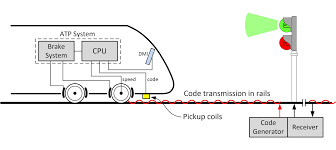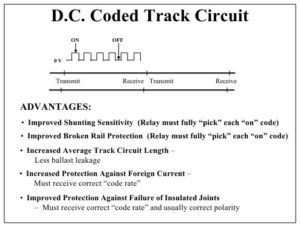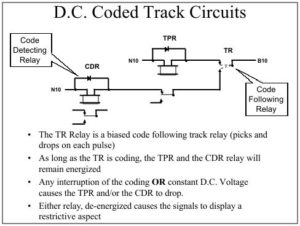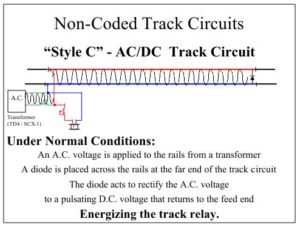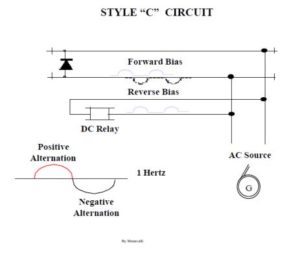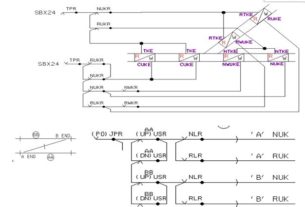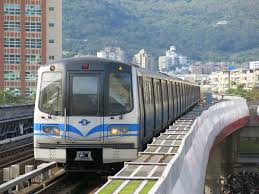Railway Signalling Coded Track Circuits D.C. Coded Track Circuits
Coded Track Circuits
• D.C. Relay Coded Track Circuits
• Solid-State Coded Track Circuits
– Electrocode
– Microtrax
D.C. Coded Track Circuits
1. Transmitter – Sends a coded D.C. voltage (Square Wave)
2. Receiver – Decodes signal
3. Dependent on the code rate, receiver will :
– Pick the appropriate track relay repeater
– Display appropriate signal aspect
– Perform function according to relay wiring
ADVANTAGES:
1. Improved Shunting Sensitivity (Relay must fully “pick” each “on” code)
2. Improved Broken Rail Protection (Relay must fully “pick” each “on” code)
3. Increased Average Track Circuit Length – Less ballast leakage
4. Increased Protection Against Foreign Current – Must receive correct “code rate”
5. Improved Protection Against Failure of Insulated Joints – Must receive correct “code rate” and usually correct polarity
The TR Relay is a biased code following track relay (picks and drops on each pulse)
1. As long as the TR is coding, the TPR and the CDR relay will remain energized
2. Any interruption of the coding OR constant D.C. Voltage causes the TPR and/or the CDR to drop.
3. Either relay, de-energized causes the signals to display a restrictive aspect
4. Different rated code following relays allow signal aspect information to be sent and received
5. Typical code rates include 75, 120 or 180pulses per minute
Information is sent in one direction only
• A duplicate set of coding relays is required for dual direction signaling
• traffic relays can be used to switch transmit and receive ends
Non Coded Track Circuit
Style “c“ Circuit
Coded Track Circuits | D.C. Coded Track Circuits | ADVANTAGES |Style “c“ Circuit | Non Coded Track Circuit
